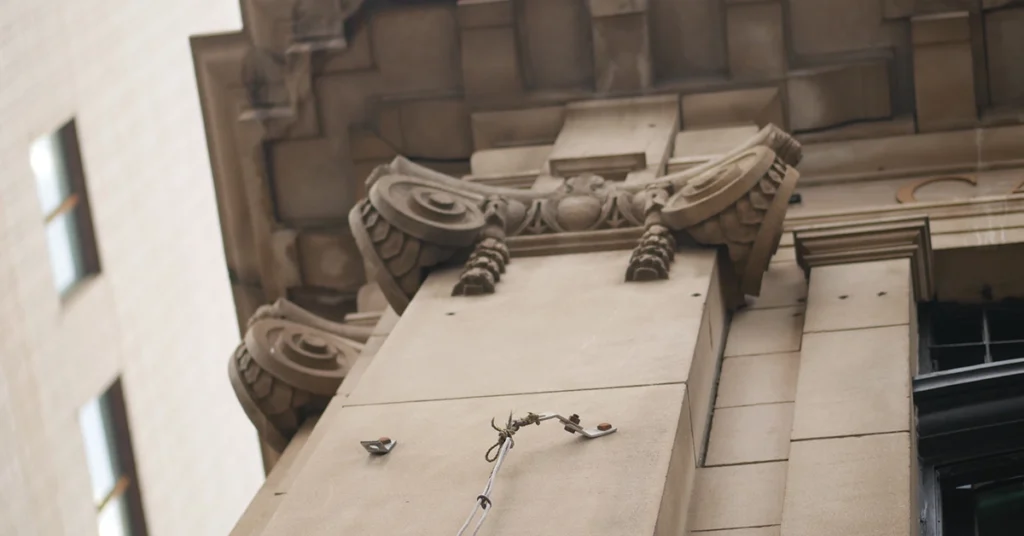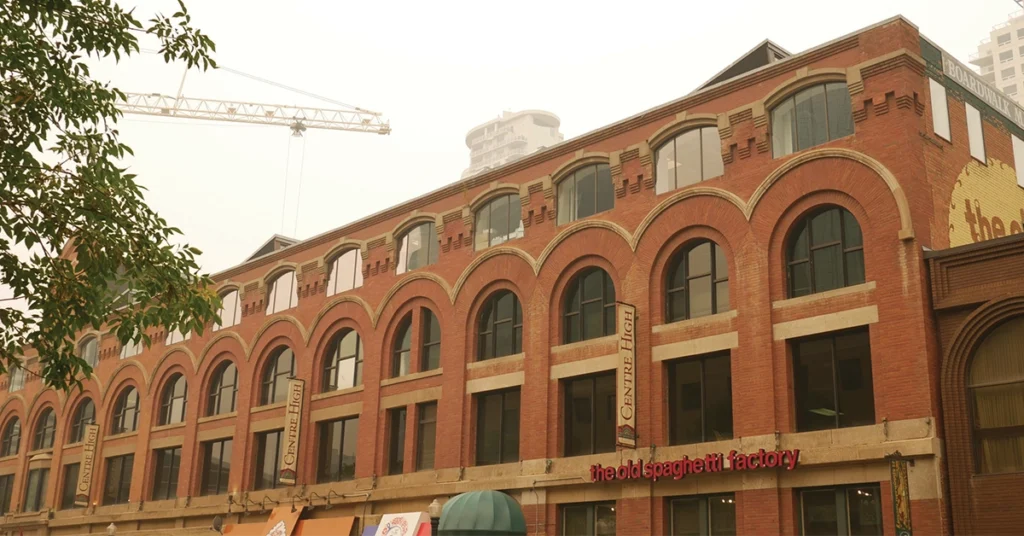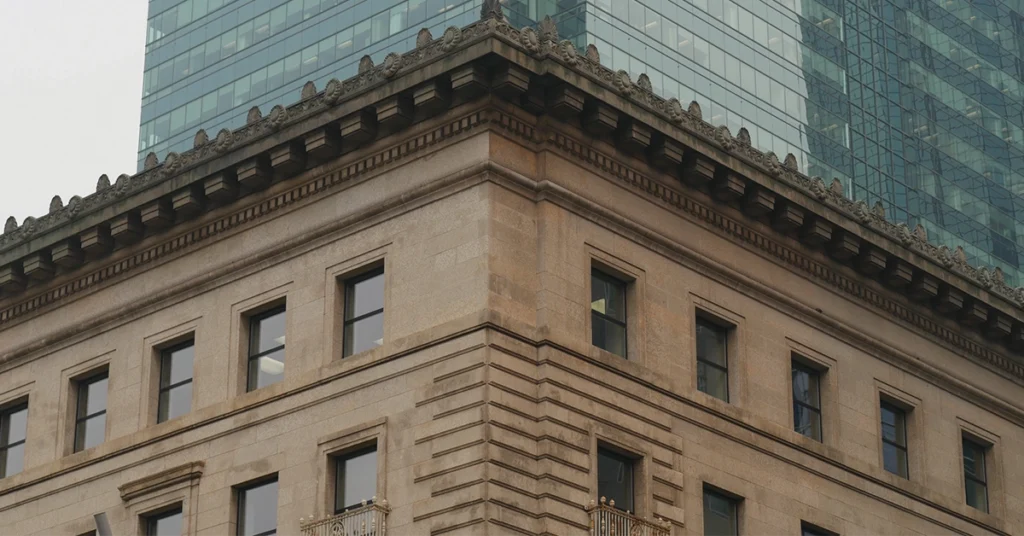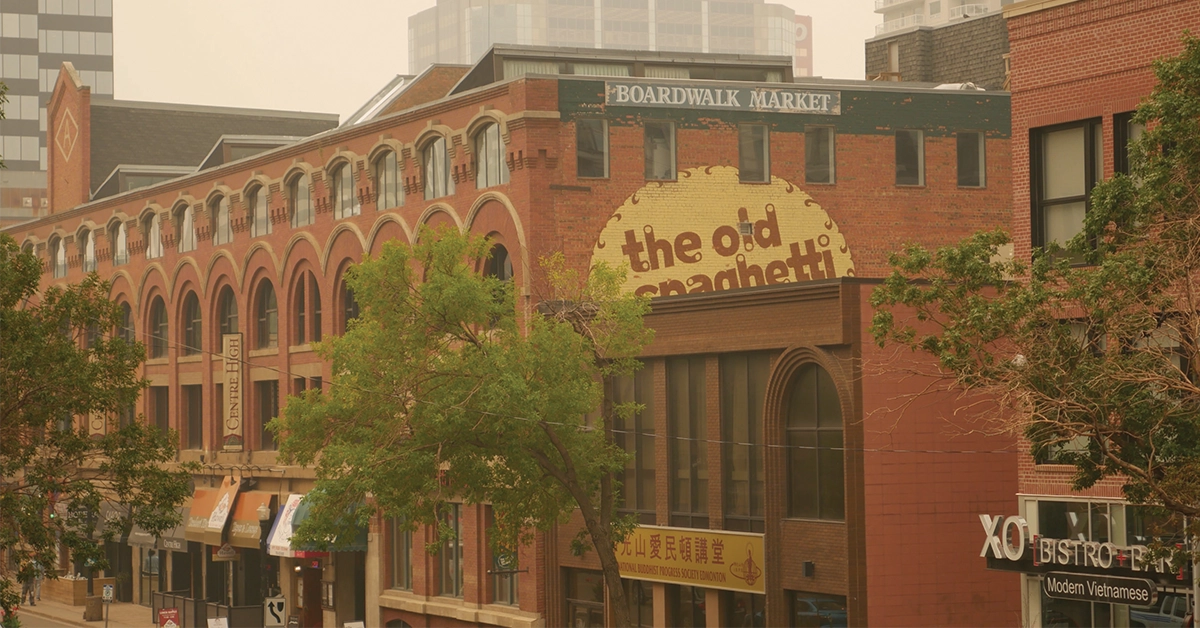The conversation around Edmonton’s heritage buildings and their preservation has had a long, tireless run at being the focal point of decision making when it comes to the city’s infrastructure.
It is more often a debate, and a continuous one at that. On one side, people argue that the development of high rises in the city will bring a vast landscape of economic opportunity. On the other, arguments are made that the protection of heritage buildings is necessary for Edmonton to solidify its identity.
The commonality between both sides of the debate lies within the idea that Edmontonians want to strengthen the character of their city. But what does character mean when it comes to urban spaces, and why do people who inhabit those spaces care about it?
In 1954, artist Mathias Goeritz and architect Luis Barragán published a manifesto called Emotional Architecture. It was a call to action for a new architecture movement that, rather than adhering to the usual utilitarianism themes of modernism in the 1950s, pulled away from them by pointing out the necessity of human emotion in spaces. Barragán is famously quoted saying that “Architecture is art when one consciously or unconsciously creates aesthetic emotion in the atmosphere, and when this environment produces well being.”
In terms of contemporary architecture, Goeritz’ and Barragan’s Emotional Architecture acts as a modern touchstone for design, and helps contemporary architects understand the emotional impact their designs may have on people.
If you’ve been lucky enough to visit architectural landmarks like the London Eye, the Empire State Building, the Eiffel Tower, or the Pantheon, you probably remember the exact feeling you had when you were in the presence of that structure. You may not have been aware of the history behind it, but it’s likely that just the sense of being there was enough to feel a connection towards that building.

“I think we all get that when we go to European cities to visit,” says Kathryn Merrett, historian and author of Edmonton City Market and Why Grow Here, both books that explore spaces of Edmonton and how people have interacted with them throughout time.
“You walk around, and a building that was used for something (in the past) is being used for something totally different. It’s probably had almost hundreds of uses during its history. It’s the sort of scale of the building, and that for me is one of the most disorienting things about change, the scale of the city changed dramatically as its doing here with all the high rises,” says Merrett.
The developing skyscrapers hovering over Edmonton reveal just how much the city is welcoming growth and newness at its core. But old structures like the Revillon building on 102 Avenue, the Rossdale Brewery on 100 Street, or warehouse buildings that line the 104 Street promenade, symbolize an important bond Edmonton shares with its heritage.
“Those buildings were built a little over 100 years ago, they’re solid as a rock, they’re not going anywhere. They’re reminiscent of an architectural time period where buildings were built beautiful, (with) lots of architecture feature and different types of brick, all that sort of stuff because people wanted buildings to be beautiful,” says Jon Hall, Co-chair of the 104 Street Steering Committee, which aims to improve downtown Edmonton by advocating for the citizens that live there.

Exteriors covered with exposed brick, arched industrial windows, and ghost signs that cover the sides of buildings with weathered advertisements are from another era. Today, you could enter a building with any one of these architectural features and you’ll most likely find yourself in a clothing shop, a gastropub, or a stylish café. It’s evident in Edmonton that repurposing heritage buildings gives a space for art and culture to thrive.
“Every building has its own history but it’s interesting, buildings become repurposed always, and one of the arguments for keeping buildings is not to sort of solidify any particular history in everybody’s memory for generations and generations, but it’s to give buildings new life and yet give people the feel that the city has a past,” says Merret.
It seems as though it’s human nature to love things that give off historical auras. We visit museums and art galleries, and fight for the protection of deteriorated old buildings. One concept in sociology and environmental psychology often attributed to late sociologist Pierre Bourdieu, called ‘sense of place’ or ‘place attachment’ explains that our human senses have a lot to do with why people might be so passionate about certain urban spaces.
“Sense of place is the lens through which people experience and make meaning of their experiences in and with place,” says Jennifer D. Adams, who writes about the identities belonging to a group of Caribbean youth when transitioned from one urban space to another in her 2013 Colorado University paper “Theorizing a Sense of Place in a Transnational Community.”

The way humans feel in their physical environment is primarily studied by social scientists and philosophers. However, throughout time, and with the introduction of emotional architecture in the 1950s, it is increasingly common for urban planners and designers to consider human emotion when taking on new projects.
Take, for example, Edmonton’s Urban Planning and Design frameworks. The City of Edmonton website states that “Urban design is more than just making places look good, it is about creating places and spaces that work for people of all ages and abilities.”
In the past few years, Edmonton has initiated a handful of “placemaking projects” with the help of CITYlab, an online publication that covers design, lifestyle, and environment in relation to urban landscapes. Some of Edmonton’s past placemaking projects include CITYchalk which invited citizens to make chalk art on the pavement, Incline to Include, a project that had colorful inclined blocks to mark Whyte Avenue storefronts, and the Quarters Pop Up Garden, which brought green life into barren urban spaces in 2016.
Attempts to create welcoming spaces are carried out in cities across the world. But when it comes to the changing infrastructure of Edmonton, one thing we can all agree on is how our city’s architecture has the ability to affect our mood. At a time when the world “wellness” seems to pop up everywhere, it might be worth grasping a deeper understanding into the way our physical surroundings affect our emotions, and in return how architecture has the power to impact our well-being.
Photography by Sydney Upright.





0 Comments